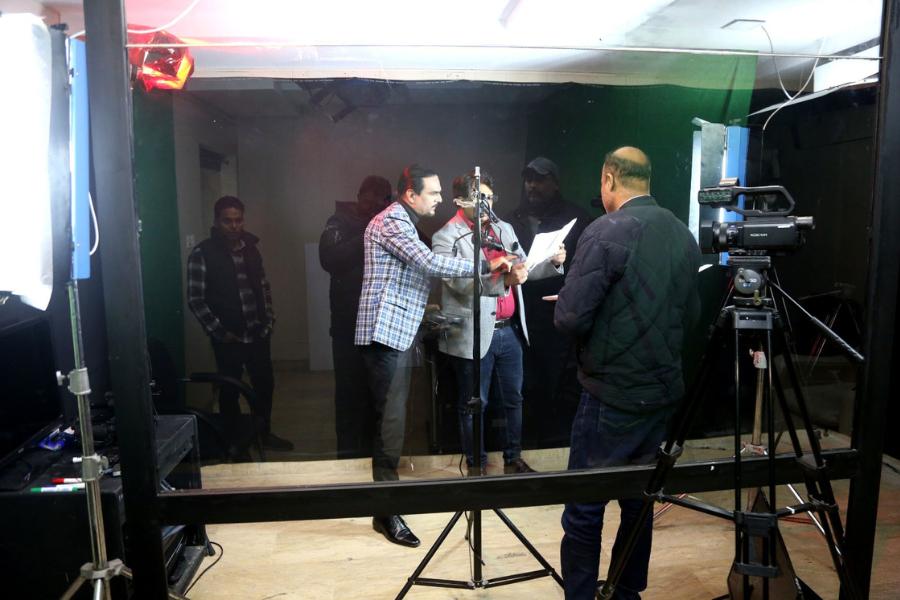Short Film fellows! Ahmed Afridi here, and let me tell you, the world of filmmaking thrums with a certain electricity, doesn’t it? You’ve got an idea, a story clawing its way out, demanding to be seen. But that blank page – whew, that can be a daunting beast. We’ve all been there, staring down the barrel of a script that feels more like a grocery list than a masterpiece.
Why Short Film?
Short films are a fantastic way to hone your filmmaking skills in a manageable format. With a tighter runtime, you can focus on developing a strong central conflict, compelling characters, and a powerful emotional arc. Short films can also serve as proof of concept for larger projects, showcasing your vision and talent to potential investors or studios.
Building Your Script: From Spark to Screenplay

1. Unearthing the Gem:
The first step is all about the concept. What ignites your passion? Is it a quirky sci-fi encounter on a city bus? A poignant exploration of a childhood memory? Whatever it is, let that spark take flight. Brainstorm, explore, and find the core of your story.
2. The Architecture of Emotion:
Now, let’s build the framework. Every great story needs a solid structure. Think three acts:
- Act 1: Introduce your characters, establish the world, and set the stage for the conflict.
- Act 2: Raise the stakes, throw your characters into the thick of it, and explore the consequences of their choices.
- Act 3: Climax! Resolution! Leave your audience with something to chew on, a lingering emotion or a thought-provoking question.
3. Breathing Life into Characters:
They’re not just names on a page; they’re the heart and soul of your story. Develop characters that feel real. Give them desires, flaws, and motivations that drive them forward.
4. Dialogue & Description: Painting with Words
This is where the magic happens. Craft dialogue that crackles with life, reveals character, and propels the story. Vivid descriptions paint a picture for your director and actors, immersing them in your world.
Watch, devour, analyze! Immerse yourself in award-winning short films. See how masters of the craft build tension, develop characters, and tell a complete story in a short burst. Websites like Short of the Week and Vimeo Staff Picks are goldmines of inspiration.
Free Resources to Supercharge Your Scriptwriting
Let’s face it, filmmaking can be a shoestring affair, especially for short films. But hey, that’s where resourcefulness comes in! Here are some free tools and websites to elevate your scriptwriting game:
Formatting Tools:
Celtx: Basic formatting and templates to get you started.
Highland 2: User-friendly interface with industry-standard formatting.
WriterDuet: Free online platform with basic screenwriting features and cloud storage.
Knowledge is Power:

No Film School: A treasure trove of filmmaking articles and tutorials, including scriptwriting tips.
Film Riot: Insightful YouTube videos on various filmmaking topics, including screenwriting.
The Script Lab: Script analysis services and educational resources for aspiring screenwriters.
Conclusion
The world of filmmaking beckons with its creative spark, but starting with a short film allows you to hone your skills in a manageable format. By focusing on a strong central conflict, compelling characters, and a powerful emotional arc, your short film can become a stepping stone to bigger projects while serving as a testament to your filmmaking talent.
FAQ’s
1. Why Short Films?
Short films offer a fantastic avenue to sharpen your filmmaking skills within a manageable scope. Their shorter runtime allows you to focus intensely on core elements like a strong central conflict, engaging characters, and a gripping emotional journey. Moreover, they can act as potent proof of your creative vision for larger projects, impressing potential investors and studios alike.
2. How Do I Build My Script from Idea to Screenplay?
- Unearthing the Gem: Start with what ignites your passion. Whether it’s a quirky sci-fi moment on a city bus or a poignant childhood memory, let your spark of inspiration guide you.
- The Architecture of Emotion: Structure your script into three acts: Introduce characters and conflict (Act 1), escalate tension and explore consequences (Act 2), and resolve with impact (Act 3).
- Breathing Life into Characters: Develop deep characters, including desires, flaws, and motivations that drive the story forward.
- Dialogue & Description: Craft lively dialogue that reveals character traits and propels the narrative. Use vivid descriptions to immerse readers in your story’s world.
3. What Are Some Free Resources to Enhance My Scriptwriting Skills?
- Formatting Tools: Explore free platforms like Celtx, Highland 2, and WriterDuet for screenwriting templates and formatting.
- Knowledge is Power: Dive into educational platforms like No Film School, Film Riot’s YouTube channel, and The Script Lab for insightful articles, tutorials, and script analysis services.

